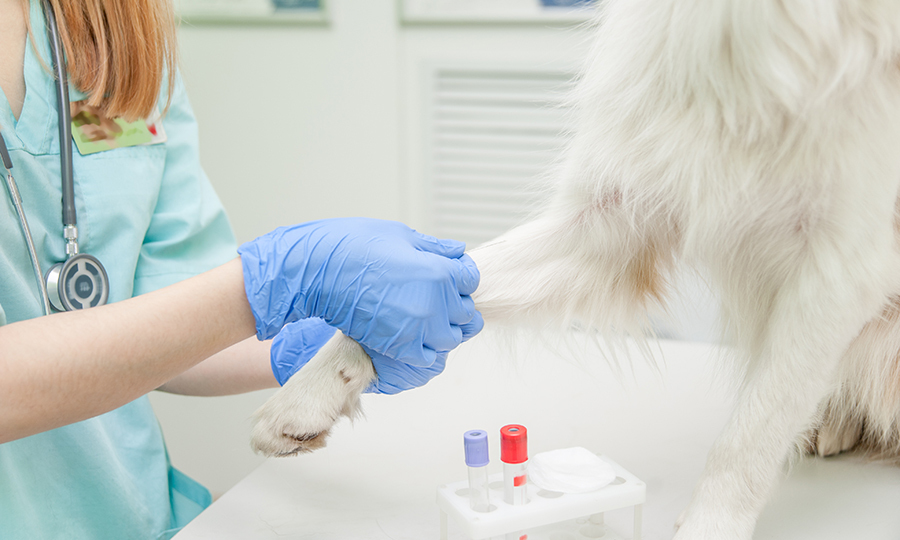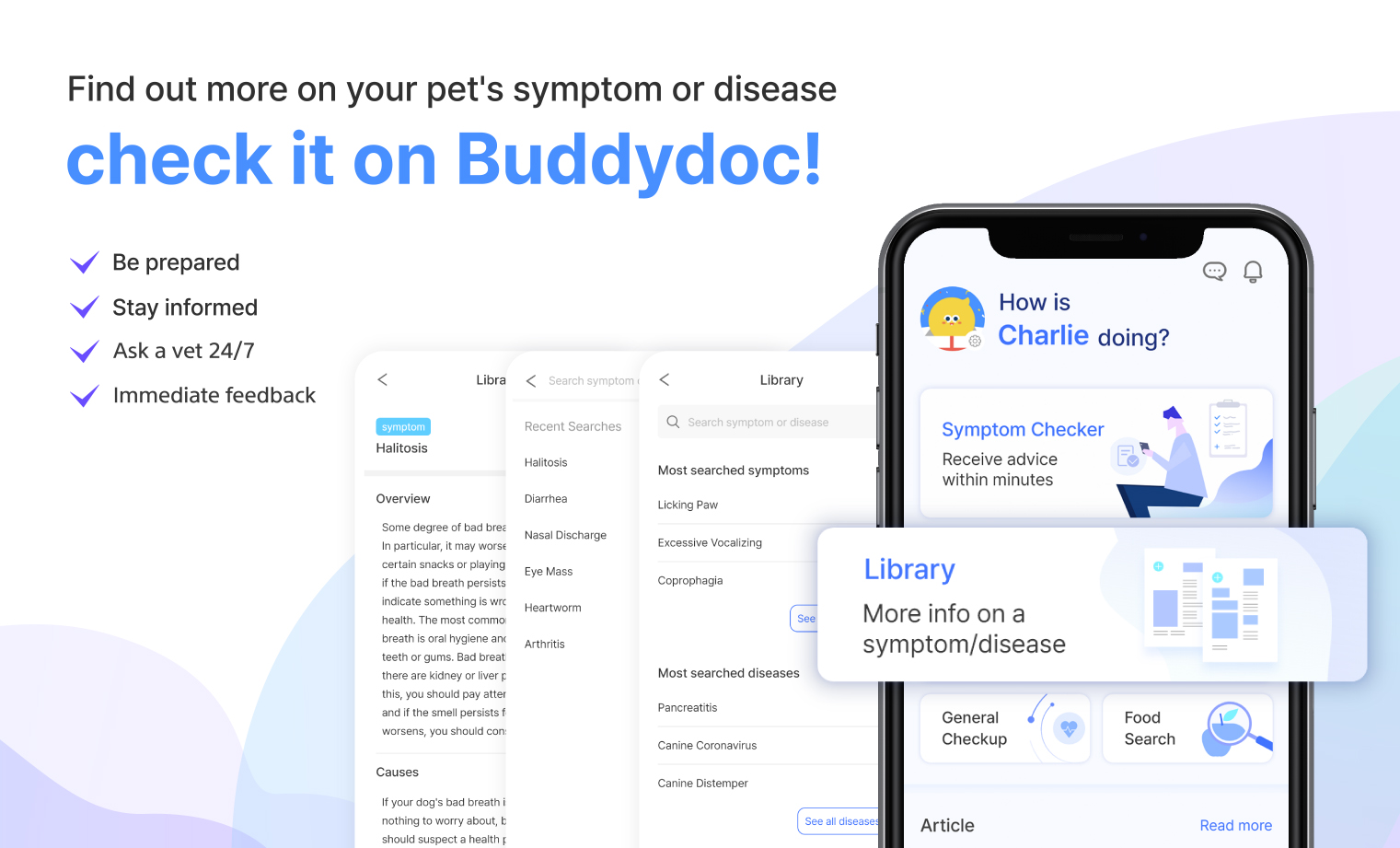DISEASES
What is Thrombocytopenia in Dogs? Causes, Symptoms, and Treatments
페이지 정보
본문


What is thrombocytopenia in dogs?
Platelets are crucial cell fragments that contribute significantly to hemostasis and coagulation in a dog’s body. They are formed in the bone marrow and travel through the bloodstream. When the number of platelets decreases below a certain threshold, it is known as thrombocytopenia. Platelets play a pivotal role in preventing blood loss when blood vessels are damaged by helping to adhere together. However, in cases of thrombocytopenia, the clotting process does not function properly, leading to continued bleeding or bruising.
In the initial stages of thrombocytopenia, symptoms may not be obvious. As the disease progresses, signs of red spots, bruising, or bleeding under the skin may be present. If these signs begin to show, it is highly recommended to seek immediate medical attention for an examination.
Causes of thrombocytopenia in dogs

Thrombocytopenia can occur in the body when platelets are destroyed, or when platelet production in the bone marrow is impaired.
This condition can be caused by the following:
-
Immune-mediated thrombocytopenia (ITP)
Immune-mediated thrombocytopenia is the most common cause of thrombocytopenia in dogs. This typically occurs due to the compromised immune system actively destroying the body’s platelets.
-
Infectious disease
Thrombocytopenia can be caused by various effects of infectious diseases, including canine distemper and parvovirus. Some of the other diseases that cause thrombocytopenia in dogs also include Lyme disease, Elycia, heartworm disease, a bacterial, and fungal disease.
-
Tumor
Tumors such as lymphoma, leukemia, multiple myeloma, and hemangiosarcoma can cause thrombocytopenia in dogs as well.
-
Enlarged spleen
An enlarged spleen can reduce the platelet count by storing large amounts of platelets in the spleen or by destroying more normal platelets than necessary, leading to thrombocytopenia.
-
Medication
Thrombocytopenia can be a side effect of some medications, such as chemotherapy drugs, certain antibiotics, ACE inhibitors, and estrogen medication.
-
Genetic factors
Greyhounds and Cavalier King Charles Spaniels are more genetically prone to develop thrombocytopenia than other breeds.
Symptoms of thrombocytopenia in dogs
The most common signs of thrombocytopenia in dogs will cause persistent bleeding and clotting disorders which can appear as small red dots, bruising, and bleeding under the skin.
- Small red dots on the skin or gums (petechia)
- Large bruises (ecchymoses)
- Nosebleeds or nasal discharge
- Bloodshot eyes
- Vomiting and blood in stool
- Black stools (melena)
- Pale gums
- Heart murmurs
- Increased respiratory rate and coughing
- High fever, lethargy, fainting, etc.
When to see a vet if you suspect thrombocytopenia in dogs
It is fairly difficult to detect thrombocytopenia with a blood test during a veterinary visit. In the early stages of thrombocytopenia in dogs, symptoms are fairly unnoticeable, and only until the disease progresses will some of the telltale signs of thrombocytopenia appear. This condition can be particularly challenging to diagnose in smaller breed dogs or young adult dogs, as it is considered an idiopathic disease that can occur without any apparent cause.
How to manage a dog with thrombocytopenia at home
If your dog has not had any recent physical trauma and red spots or bruising continues to develop on their skin. It is recommended to seek medical attention immediately to determine the cause.
If thrombocytopenia is diagnosed, it is advisable to limit excessive physical activity to prevent bleeding and avoid hard food items that could cause further injury when chewed.
Diagnosing thrombocytopenia (ITP) in dogs

If you notice red patches or bruises developing on your dog’s skin, or if your dog has persistent bleeding, a blood test will be done to confirm thrombocytopenia at an animal hospital.
-
Complete blood cell count (CBC)
A complete blood count can check your dog’s platelet count. The normal platelet count is 175,000 to 500,000 per microliter of blood. Anything below a certain amount will easily confirm a case of ITP in dogs.
After thrombocytopenia is confirmed, additional tests are needed to determine the cause of impaired platelet formation.
-
Blood test
Further blood tests can help the veterinarian check for abnormalities, inflammation, tumors, and infectious agents in the body organs.
-
Imaging test
Through radiographic and ultrasound examination, abnormalities and tumors can be checked in the dog’s body.
-
Bone marrow test
A bone marrow test can check for any other potential immune-mediated diseases and tumors.
Even though the platelet count may appear normal, impaired platelet function can still cause persistent bleeding and bruising in certain cases. This condition can be linked to various factors, such as kidney disease, some medications like antibiotics can cause these side effects or congenital diseases like von Willebrand disease.
Treatment for thrombocytopenia in dogs
Treatment of thrombocytopenia depends on the underlying cause. A blood transfusion may be required if the bleeding occurs suddenly.
-
Infection
If an infectious disease is the cause of ITP, antibiotics and other medications may be prescribed to treat the infections.
-
Immune-mediated thrombocytopenia
In the case of ITP, immunosuppressants, such as steroids, or other drugs that stimulate platelet production like romiplostim and anti-cancer medications such as vincristine may be prescribed.
-
Tumor
Thrombocytopenia due to tumors may require surgical intervention or chemotherapy treatment.
What is the prognosis for treatments for thrombocytopenia in dogs
Regarding immune-mediated thrombocytopenia (ITP), the effects of treatment typically manifest around a week after treatment begins, and roughly 80% of patients recover with appropriate medical care. However, recurrence is fairly common, so caregivers must remain vigilant of this condition and arrange regular check-ups.
Thrombocytopenia caused by a tumor, infection, or toxin may have varying degrees of recovery depending on the individual's health condition and the efficacy of the treatment received.
Prevention of thrombocytopenia in dogs
Thrombocytopenia can be caused by immune-mediated factors or diseases that are difficult to prevent. The best form of prevention is through early detection by having regular health checkups with a veterinarian.
Find out more about your dog’s symptoms and diseases on the Buddydoc app!

The Buddydoc library is filled with everything you’d want to know about each symptom and disease your pet may experience. If you would like to find out more about the causes, signs, treatments, preventions, and more for your dog’s disease. Try out the Buddydoc app and search for your pet’s symptoms or diseases in the Buddydoc library.













